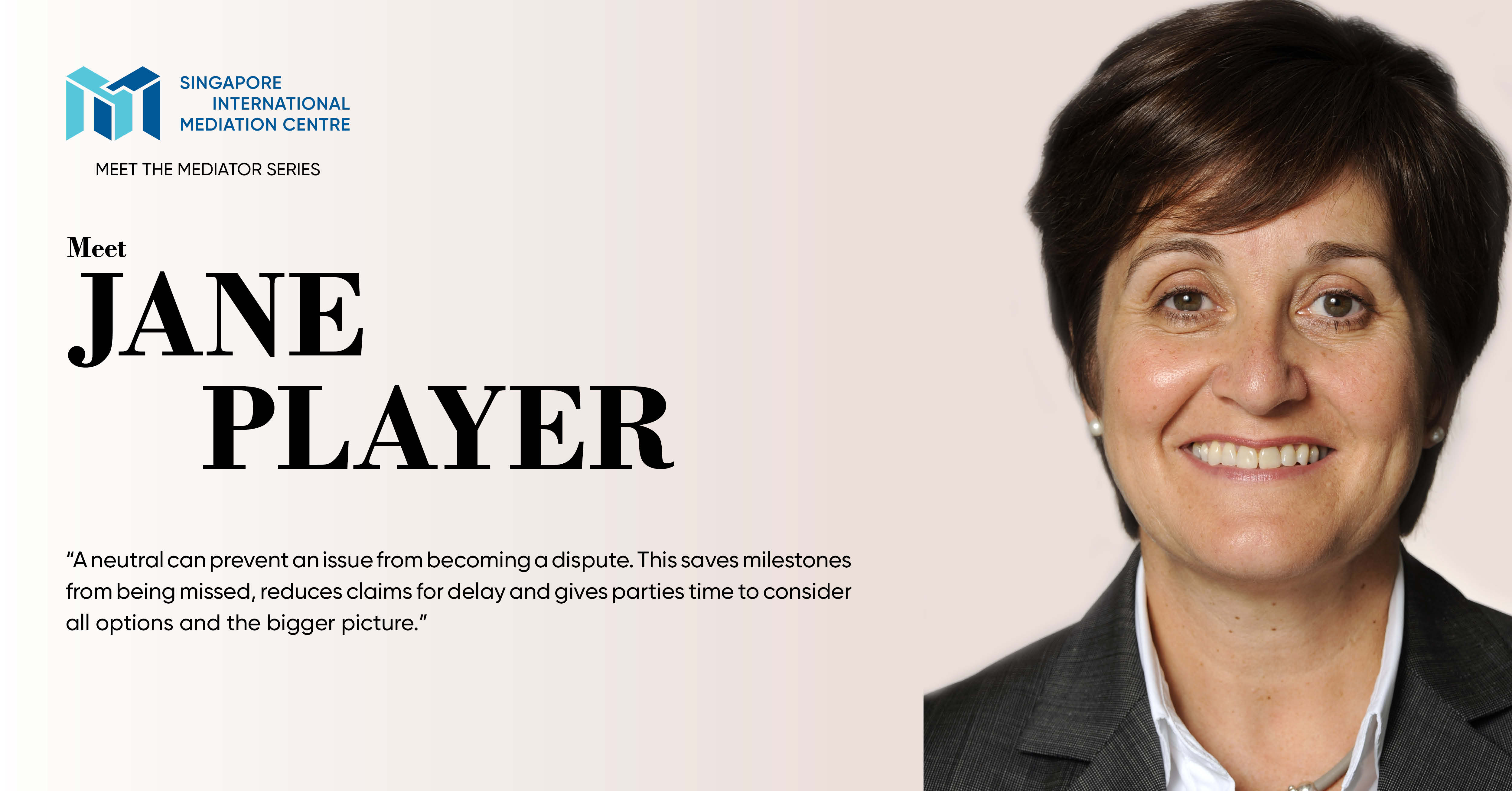Jane Player: A Mediator “In Life”

Jane Player is known for her knack of encouraging strong personalities to remain at the table despite their cynicism with the mediation process – and come to settlement.
All in a day’s work for the litigator-turned-mediator, who was privy to some of the first mediations in the UK and is today an active promoter of “in life mediation”, a new trend in English dispute resolution.
As a litigator for over three decades and who has undertaken more than 250 mediations over the past 20-odd years on a wide range of commercial disputes, Jane is adept at grasping parties’ positions from both sides of the table.
Jane first experienced the real benefits of a commercial settlement when she acted as counsel for Bechtel in 1990. She practised law for 35 years in London and was a partner at various international firms including Bird & Bird, DLA Piper and King & Spalding before receiving her mediator accreditation in 2001. She mediated alongside her private practice for over 15 years before going full-time in 2017. She is a SIMC International Mediator, a SIMI Certified Mediator and a CEDR Chambers Mediator, among other qualifications.
Jane sees herself as a proactive facilitator. While she resists making evaluations, she pushes back on parties who have not thought through the consequences of letting the dispute fester.
To her, lawyers who understand the value of compromise are an inspiration, as they have their clients’ best interests at heart. “Because rarely does a judgement achieve as much.
“I am sure it earns them respect, and probably repeat business, from their clients,” she tells SIMC.
We share Jane’s recent interview with the Centre for Effective Dispute Resolution (CEDR), in which she teaches us a thing or two about the mediation process, and on mediating disputes in the growing area of Intellectual Property (IP).
Managing Complexity in Mediation
One trend we see developing is that of ‘Issue Mediation’.
That is to say, identifying one issue with the lawyers for example, mediating that point to see if that breaks down the complexity at play and helps with the resolution of the whole dispute.
It is important to remember that complexity doesn’t always mean big numbers. Cases with relatively low quantum can be incredibly complicated.
Jane tells SIMC: “I mediated a case where only $80,000 was at stake but it was complicated as it involved a family trust, as well as very intricate cultural and sensitive family issues. For that one, the money was almost irrelevant.”
On ‘Project’ or ‘In-Life’ Mediation
What is it?
Essentially, it is engaging with parties who are about to get involved in a project, joint venture or collaboration of some kind, for example a PFI, to help them recognise that in large-scale, long-term endeavours, the journey isn’t always going to be smooth.
Project Mediation involves bringing in a neutral, at the start of the project, to agree, not contractual elements, but a memorandum of understanding (MoU) of what the neutral will bring to the endeavour but also what the parties can expect of each other.
Jane tells SIMC: “A neutral can prevent an issue from becoming a dispute. This saves milestones from being missed, reduces claims for delay and gives parties time to consider all options and the bigger picture.”
Consequently, should at any point, the project encounter difficulty or relationships begin to breakdown, activities are frozen and the neutral is brought back in, to remind them of the MoU and to help manage or resolve any conflict.
Unlike a dispute board which is comprised of a team and issues decisions, the neutral in this case is used to facilitate dialogue with a view to the parties retaining control over the problem and the solution.
This approach to conflict was used in the Euro Tunnel project and Jane Player herself cited an example with a Swiss Pharma company seeking US funding she worked on where she was asked to assist with on-going intercultural issues at play in the project.
Jane tells SIMC: "My involvement in such projects also spans cross-cultural pharmaceutical collaborations, long-term IT and telecommunications projects, as well as public-private projects in healthcare, education and justice. As these are sectors where banks, construction companies and commercial interests can diverge, a neutral can prevent an issue from becoming a dispute. This saves milestones from being missed, reduces claims for delay and gives parties time to consider all options and the bigger picture. It is absolutely vital on any large joint venture or collaboration."
This is thought to be a growth area for the expanding use of mediation skills and processes and is increasingly be used in IT and construction disputes.
On Flexibility in Mediation
People always talk about mediation being a flexible process. But, what does that actually mean?
This means working with the clients and the lawyers beforehand to find out and assuage any concerns, fears or reservations.
Mediation also allows for breaks when needed, a combination of private and joint session, convening different combinations of people from both sides, a half-day as opposed to a full-day or indeed go well into the small hours if settlement is in sight.
Flexibility is one of the key differentiators compared with other dispute resolution processes. In court you follow the CPR, in arbitration you adhere to institutional rules, whereas mediation is the only mechanism where parties retain complete control of the process.
On the Value of Joint Sessions
Jane, like Eileen Carroll QC (Hon) in her blog on Joint Sessions agrees that joint/plenary sessions are of great value.
It gives parties an opportunity to come together having maybe not seen each other in a long time, to understand how the dispute has impacted the other side, to see how what you are saying is resonating and ultimately begin to piece together what might motivate them to want to settle.
Ultimately, they shouldn’t be forced on parties, but the mediator should work with the clients and lawyers, coach them if necessary, to see if there is some way the sides can come together because of the value it can generate.
On Mediating Intellectual Property Disputes
Historically, there was a hesitance on the part of IP lawyers and In-House Counsel in IP rich companies to use mediation.
The prevailing view was you either owned the IP or you didn’t, so how could mediation help with finding a solution to a dispute.
However, people are becoming more creative with their IP and how they use it as a business asset, especially with the advent of cloud technology. They are increasingly more willing to discuss matters such as royalty payments, licenses and compromises.
Therefore, more and more IP disputes are coming to mediation as it is a unique opportunity to explore a creative and commercially focused solution.
*This article was produced and first published by the Centre for Effective Dispute Resolution (CEDR) under the title, 5 Things We Learned from Jane Player. Reproduced and edited with permission. We thank CEDR for sharing this article with us.
This is part of a series featuring SIMC’s international mediators. SIMC is partnered with more than 70 mediators from close to 20 jurisdictions, enabling the centre to match parties with the best mediators for the matter. For more information on mediating with SIMC, call or write to us.

